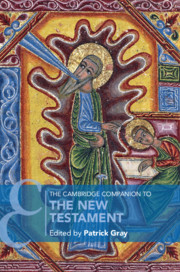Book contents
- The Cambridge Companion to the New Testament
- Cambridge Companions to Religion
- The Cambridge Companion to the New Testament
- Copyright page
- Contents
- Map
- Contributors
- Preface
- Abbreviations
- Part I Historical Context
- Part II The New Testament Writings
- 5 The Gospel of Mark
- 6 The Gospel of Matthew
- 7 The Third Gospel and the Acts of the Apostles
- 8 The Gospel of John
- 9 1–2 Thessalonians
- 10 1–2 Corinthians
- 11 Romans and Galatians
- 12 The Prison Epistles
- 13 Letters to Paul’s Associates (1–2 Timothy, Titus)
- 14 The Letter to the Hebrews
- 15 The General Epistles
- 16 Revelation
- Part III Methods and Modes of Interpretation
- Index
- Cambridge Companions to Religion (continued from page iii)
- References
9 - 1–2 Thessalonians
from Part II - The New Testament Writings
Published online by Cambridge University Press: 23 April 2021
- The Cambridge Companion to the New Testament
- Cambridge Companions to Religion
- The Cambridge Companion to the New Testament
- Copyright page
- Contents
- Map
- Contributors
- Preface
- Abbreviations
- Part I Historical Context
- Part II The New Testament Writings
- 5 The Gospel of Mark
- 6 The Gospel of Matthew
- 7 The Third Gospel and the Acts of the Apostles
- 8 The Gospel of John
- 9 1–2 Thessalonians
- 10 1–2 Corinthians
- 11 Romans and Galatians
- 12 The Prison Epistles
- 13 Letters to Paul’s Associates (1–2 Timothy, Titus)
- 14 The Letter to the Hebrews
- 15 The General Epistles
- 16 Revelation
- Part III Methods and Modes of Interpretation
- Index
- Cambridge Companions to Religion (continued from page iii)
- References
Summary
This chapter discusses the critical issues involved in the interpretation of 1-2 Thessalonians, including pseudonymity, the concept of the parousia and its roots in Jewish apocalypticism, and paraenetic strategies employed by Paul.
Keywords
- Type
- Chapter
- Information
- The Cambridge Companion to the New Testament , pp. 176 - 187Publisher: Cambridge University PressPrint publication year: 2021

